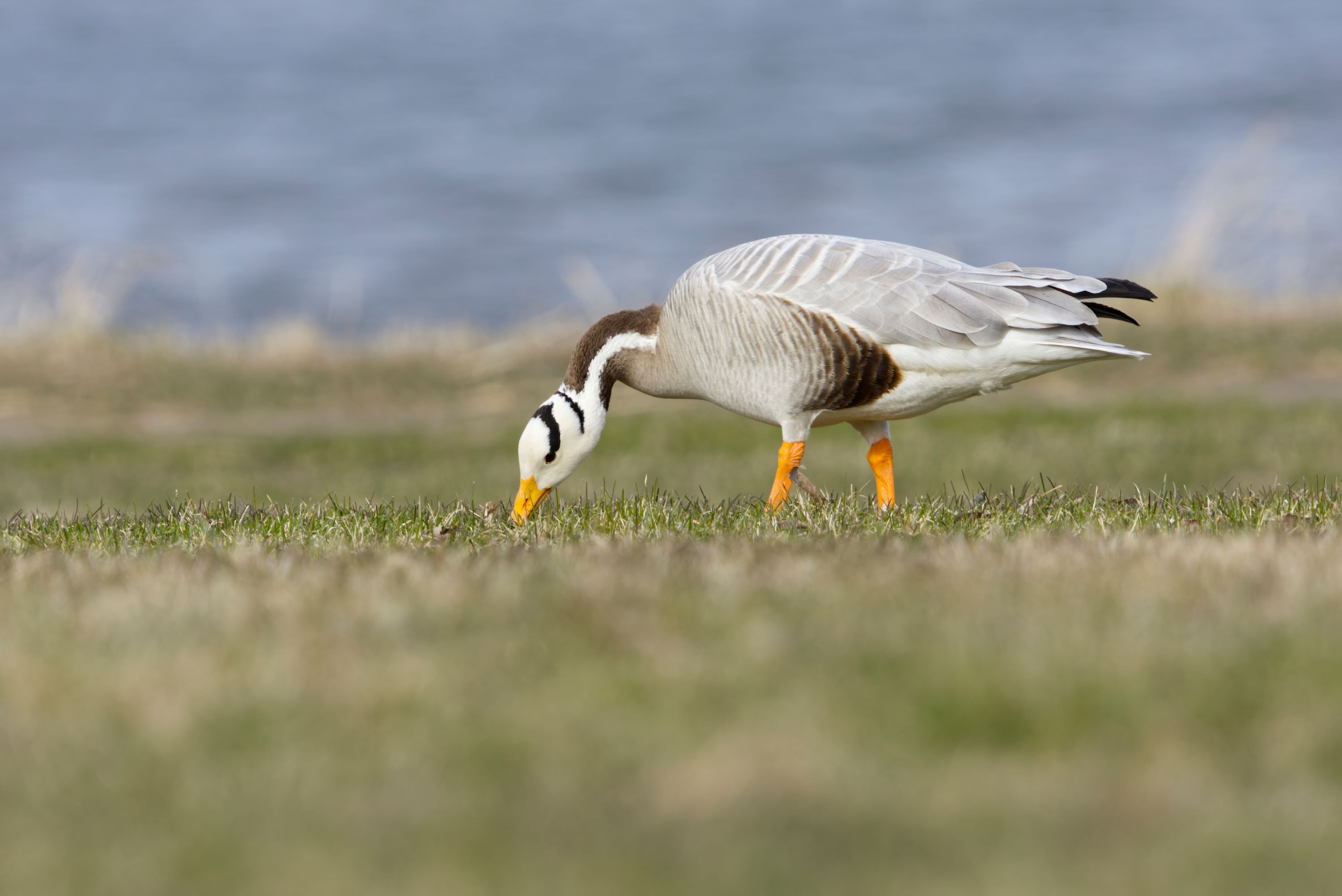
The Bar-Headed Goose: An Avian Marvel
Introduction
The Bar-headed Goose stands as one of nature's most remarkable aviators. Renowned for its extraordinary high-altitude flights over the Himalayas, this species embodies the incredible adaptability and resilience of birds.
Unparalleled High-Altitude Flight
The Bar-headed Goose's migratory journey is a feat of endurance and physiological marvel. Twice a year, these birds traverse the Himalayan range, reaching altitudes of up to 7,000 meters, where oxygen levels are drastically lower than at sea level. This remarkable journey makes them one of the highest-flying birds in the world.
Specialized Adaptations
The goose's ability to thrive in such extreme conditions is due to a series of evolutionary adaptations. Its hemoglobin has a unique affinity for oxygen, allowing it to efficiently utilize the sparse oxygen available at high altitudes. The bird's muscular system, particularly its flight muscles, is highly developed, facilitating sustained, powerful wing strokes necessary for such arduous flights. Additionally, their respiratory system is exceptionally efficient in extracting oxygen from thin air, a critical adaptation for survival in low-oxygen environments.

Distinctive Physical Traits
The Bar-headed Goose is a medium-sized bird, easily recognizable by the two prominent black bars on the back of its head. Their overall plumage is predominantly grey and white, with a stark contrast provided by their bright orange beak and legs. The striking appearance of these birds, coupled with their high-altitude flying prowess, makes them a fascinating subject for birdwatchers and ornithologists.
Breeding Habits and Migration
Bar-headed Geese breed predominantly in the high-altitude wetlands of Central Asia, especially Mongolia and Tibet. Their preference for nesting at high altitudes, sometimes above 4,000 meters, offers protection for their young from predators. Post-breeding, they undertake their impressive migration to wintering grounds in South Asia, traversing the formidable Himalayas to reach warmer regions in India and Myanmar.
Cultural and Mythological Significance
In many Asian cultures, the Bar-headed Goose is revered and often symbolizes marital fidelity. It is a frequent subject in traditional art and literature, reflecting its importance in local folklore. The bird's awe-inspiring migratory journey over the Himalayas has also led to its inclusion in numerous cultural myths and legends, often being portrayed as a symbol of strength, endurance, and perseverance.
Conservation and Threats
Although the Bar-headed Goose is currently listed as a species of least concern, it faces various threats, including habitat destruction, climate change, and hunting along its migratory routes. Preserving their natural habitats and migratory corridors is crucial for the continued survival of this remarkable species.
Global Perspective
While the Bar-headed Goose is not found in the Americas, including Utah, its unique lifestyle and adaptations offer valuable insights into the diversity and resilience of avian species. For bird enthusiasts globally, understanding the life of the Bar-headed Goose broadens their appreciation of bird migration and the importance of global conservation efforts.
Conclusion
The Bar-headed Goose, with its impressive adaptations and striking appearance, represents the wonders of the natural world. Its ability to navigate one of the planet's most challenging environments showcases the remarkable capabilities of avian species. For birdwatchers, conservationists, and nature lovers, the story of the Bar-headed Goose is a source of inspiration and a reminder of the importance of preserving the natural world for future generations to witness and admire.